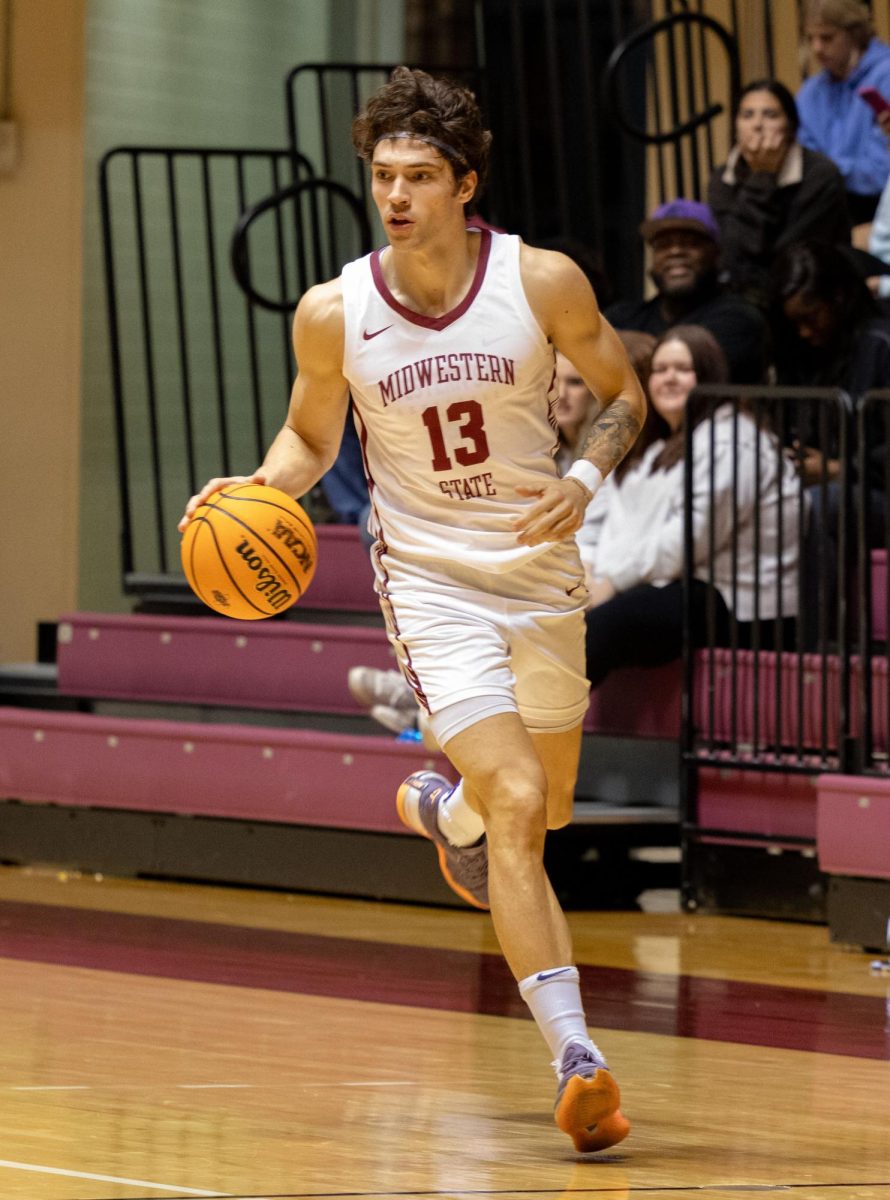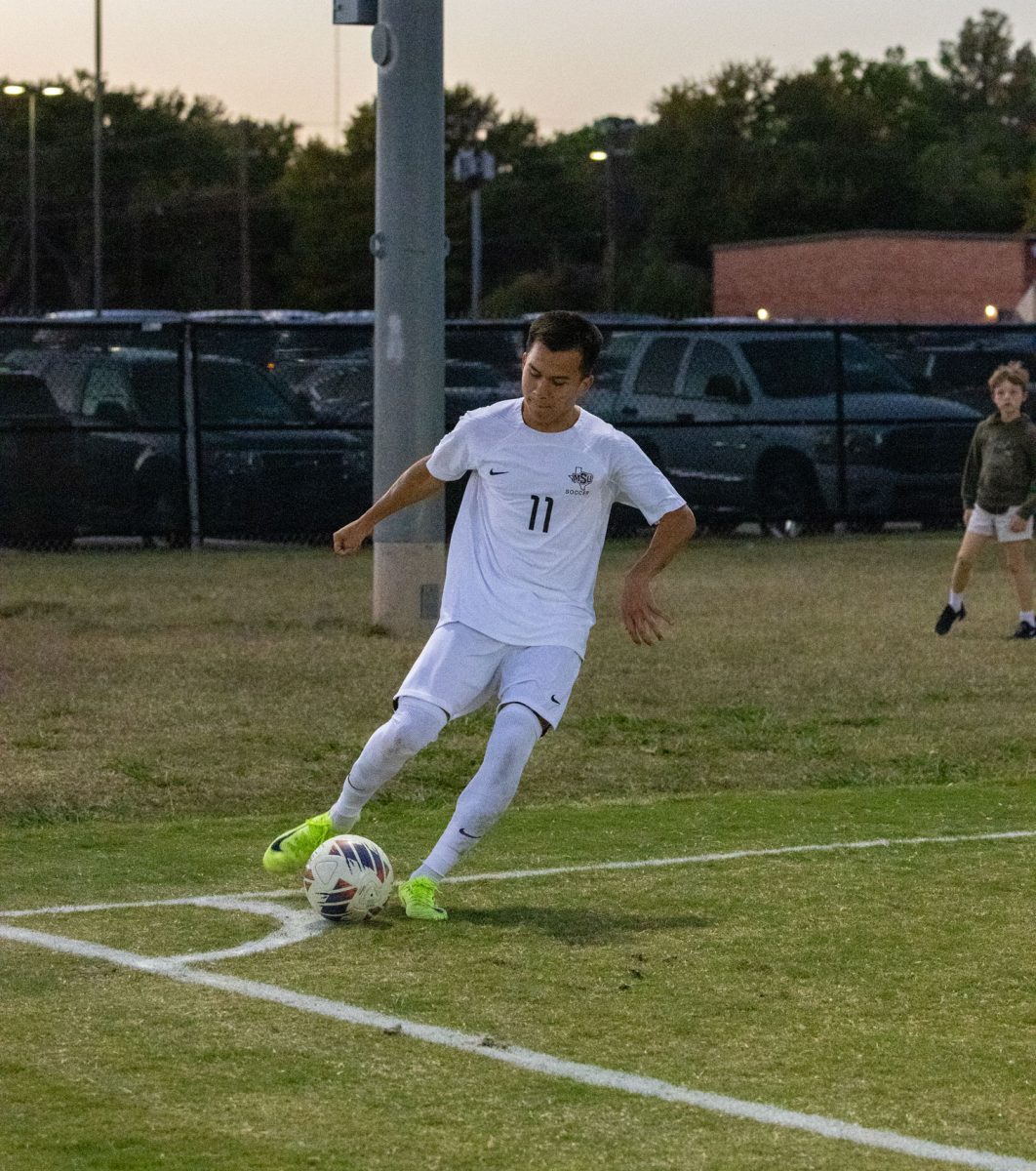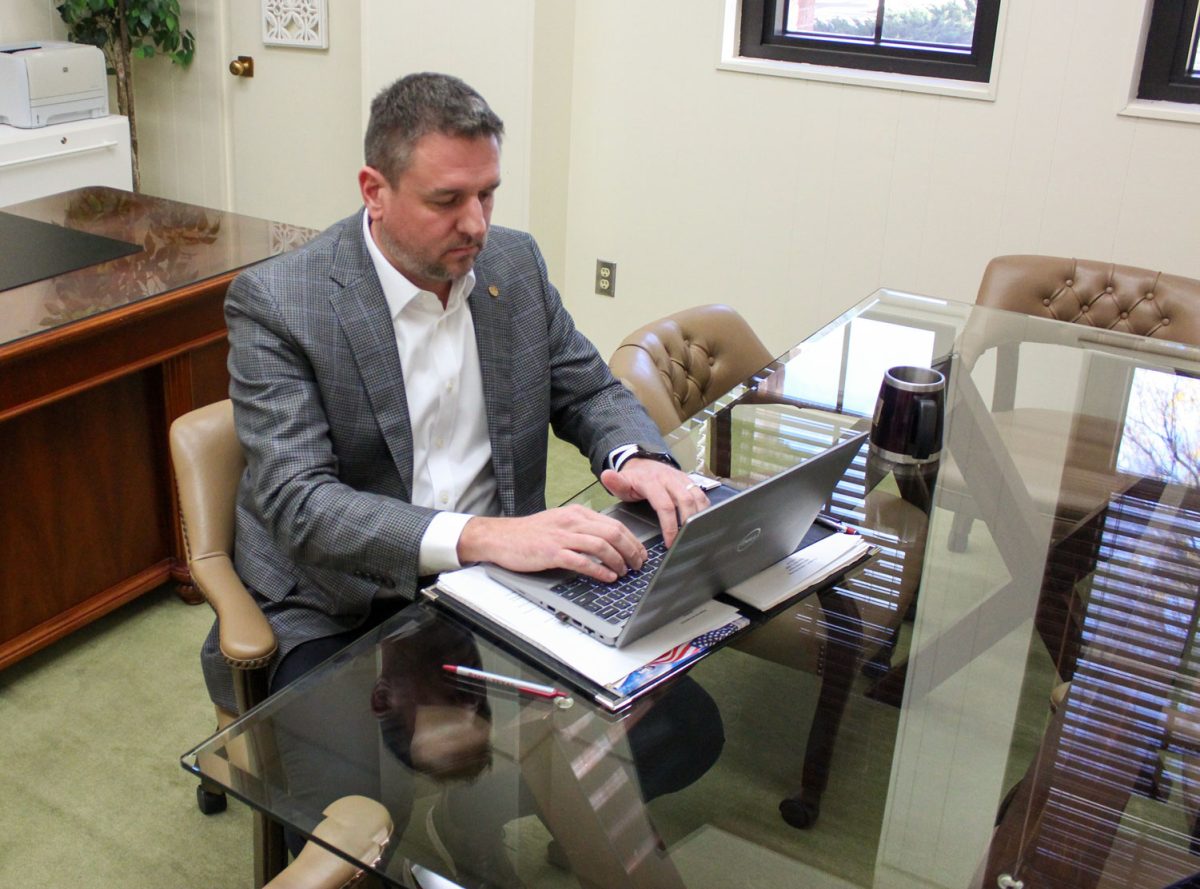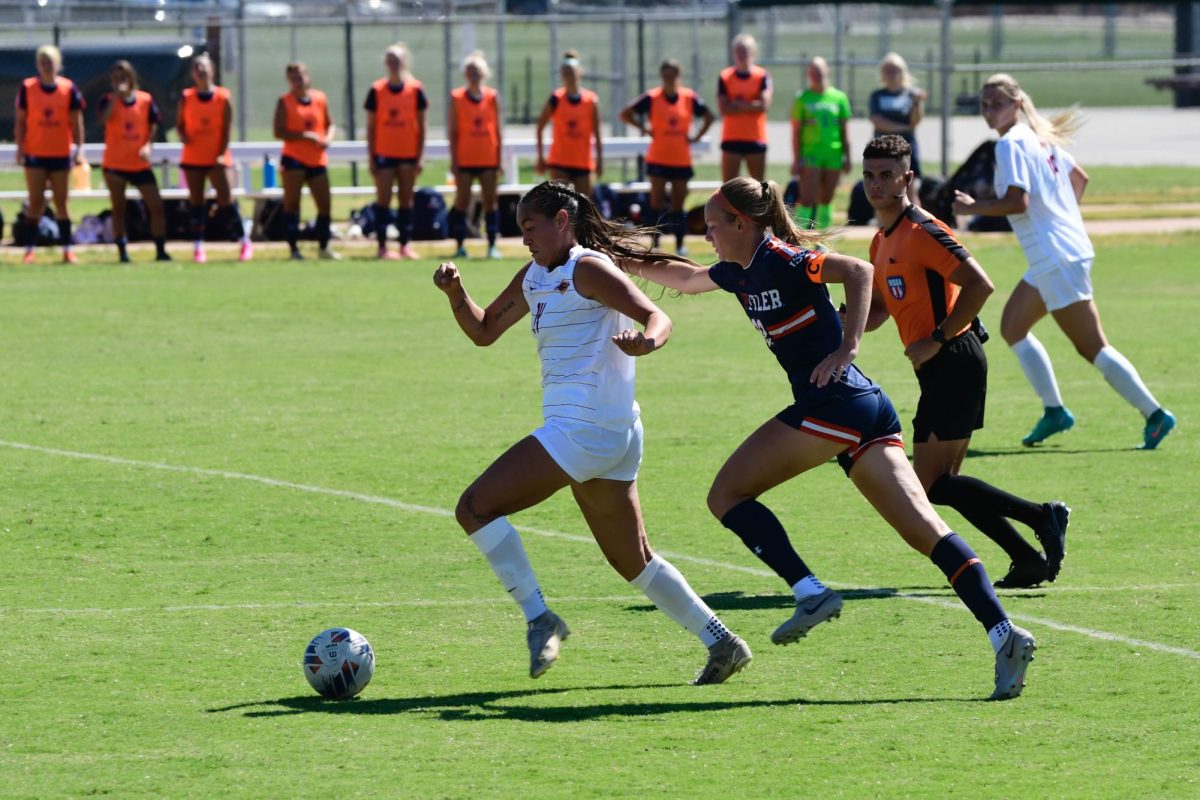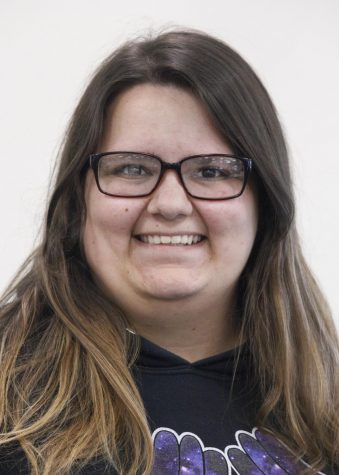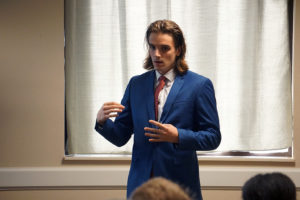
By the time they got to Clark, the $10 presentation posters looked pretty polished. The two-by-three feet posters looked professional and the students donned in formal attire had rehearsed their presentations dozens of times. But when it came right down to it, neither the presentations nor the work created themselves.
Kevin Ellis, computer science junior, said, “It took us about a semester to do. We started by splitting up the work and determining what each of us needed to do. We also thought about what could possibly be a problem in the future and how we could avoid those problems.”
Ellis and his partner, Anthony Enem, are in the process of having their project becoming an app.
Ellis said, “Our project is about determining where an empty spot is at in the parking lot so later on the driver can go straight to an open spot without having to drive around the parking lot to find a spot. We don’t have the app done yet, but hopefully it will be soon.”
Two groups out of more than 180 individual presenters, most in groups, that weren’t from EURECA were social work presenters.
Tionne Fuller, social work junior, said, “We had surveys and split them up between each other and we were each responsible for completing a certain amount of surveys.”
Fuller’s group mates Morgan Perron and Katie Eunbank, both social work juniors, elaborated on the background work for their presentation.
Eunbank said, “It’s been about three months since we started. We jumped right in on the first week of school and by the second week we had to have what we were going to do.”
The social work students also work closely with their professor during this process.
Perron said, ”We came up with what the questionnaires were going to consist of then we printed them out, dived them up amongst ourselves and each completed a certain amount. We split up the completed questionnaires and did the data analysis with Dr. Raj and entered it into the SPSS [Statistical Package for the Social Science]. From there we did the outline of the poster and Dr. Raj helped us with the implications of the study and the conclusion.”
Kari Crowl, social work senior, also took part in the forum.
Crowl said, “We started late September. It took us until about the beginning of November. We conducted our research over secondary traumatic stress among social workers working with children, specifically traumatized children. We hypothesized that those working with traumatized children would experience secondary traumatic stress we found that that was not the case.”
Presenters found a few things to be difficult throughout the process.
Eunbank said, “Getting people to take the survey was the hardest part because you see people in the CSC and try to get their attention but they brush you off and say they have to go to class.”
Another group had the same problem.
Crowl said, “The hardest part was finding participants, especially because there was another project that was similar to ours.”
Social work participants also had to get approval from their professors.
Fuller said, “Getting it all approved by Dr. Raj was also hard.”
While it was difficult for the presenters their work did not go unnoticed. 17 professors including some who participated in the forum, gave extra credit to students who went to the forum and filled out an evaluation form. 513 students participated not including the ones who did not fill out forms.
Packiaraj Arumugham, associate social work professor, said, “I teach a course called social work research. As part of the core research requirement students have to make an actual research project which means they have to create a questionnaire or survey and collect data analysis.”
Students taking part in EURECA work closely with mentor’s such as, Arumugham and Professor Magaly Rincón-Zachary.
Arumugham said, “I take them through the process and the presentation is the combination of all the data.”
Out of more than 70 research projects Arumugham had one that he particularly liked.
“I liked all of them. I liked the quality of the work all the students had done but one thing I was impressed with was the study of international student’s cultivation into college.”
Arumugham wanted his students to get some skills out of their research.
Arumugham said, “First of all one of the competences of a social worker is that they should be able to have certain skills, that’s what the course and the entire project has contributed to.”
These are some words of encouragement from Arumugham.
“For those who have done it already, I commend you for your hard work. It has been a very, very stressful experience for everyone but I really appreciate your hard work and willingness to cooperate throughout the process.”
Magaly Rincón-Zachary, director of undergraduate research, coordinated the eighth annual forum, banquet the night before and the award ceremony. All three of the events including the print outs and publicizing cost a little more than 3,000 dollars.
Rincón-Zachary said, “I enjoyed the posters a lot because I had the opportunity to talk to the students face to face. With oral presentations, students are so limited by the time and only two or three questions are allowed, so you don’t have time for a conversation whereas for the posters, you do. One presentation that caught my attention was a poster presentation that was about aquaponics. The idea is to grow leafy plants like lettuce and radishes in a fish tank and have fish also living in the aquarium.”
Rincón-Zachary had a few things that she wants students who did research to take away from it and words of encouragement.
“You could see the work that all the students put into it. They put a lot of time and a lot of thinking and discussion into it. I didn’t see anything that was not good. The students did a very good job not because I’m the director but from seeing how they conducted themselves, they did excellent. Yes there were winners but I think everyone is a winner. You cannot put a price tag to that because it is so valuable. I am very impressed.”







